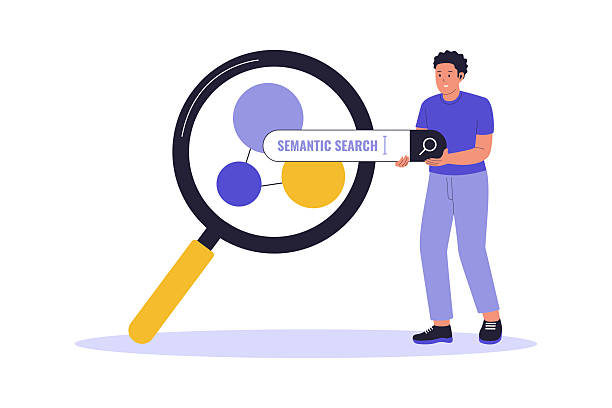In recent years, computer vision has transformed industries ranging from healthcare to autonomous transportation. At the heart of these advancements lies Semantic Segmentation—a critical technology that enables machines to understand and interpret visual data at the pixel level. Unlike traditional object detection, which identifies objects with bounding boxes, semantic segmentation assigns a specific class to every pixel in an image. This precise level of understanding allows AI systems to make more informed decisions, driving innovation across diverse applications.
Understanding Semantic Segmentation
Semantic segmentation is a type of image analysis that classifies each pixel in an image into predefined categories, such as “road,” “pedestrian,” “vehicle,” or “building.” This fine-grained approach allows AI systems to comprehend the structure and content of complex scenes. For example, in autonomous driving, semantic segmentation enables vehicles to differentiate between lanes, sidewalks, and obstacles, providing the contextual awareness necessary for safe navigation. Similarly, in medical imaging, it helps in accurately delineating tumors, organs, or other anatomical structures for diagnostic purposes.
For a deeper dive into this topic, refer to Understanding Semantic Segmentation: Key Challenges, Techniques, and Real-World Applications, which explores the practical aspects of implementing this technology across various industries.
Key Benefits of Semantic Segmentation
1. Enhanced Accuracy in Image Analysis
One of the primary advantages of semantic segmentation is its ability to provide highly accurate pixel-level classification. This level of detail enables AI systems to interpret scenes more effectively than traditional methods. For instance, in agriculture, semantic segmentation can distinguish between crops, weeds, and soil, facilitating precision farming practices that optimize yield and reduce chemical usage.
2. Improved Decision-Making for Autonomous Systems
Autonomous vehicles and robots rely on semantic segmentation to understand their surroundings and make informed decisions. By analyzing each pixel, these systems can detect obstacles, plan routes, and respond dynamically to changing environments. The distinction between Semantic vs. Instance Segmentation for Autonomous Vehicles becomes crucial here: while semantic segmentation categorizes each pixel by class, instance segmentation differentiates between individual object instances, which is essential for collision avoidance and path planning.
3. Versatility Across Industries
Semantic segmentation is not limited to autonomous driving. Its applications span healthcare, retail, robotics, urban planning, and more. In healthcare, precise segmentation of medical images aids in early disease detection and surgical planning. In urban development, satellite imagery segmented into land use categories assists planners in designing efficient city layouts. This versatility makes semantic segmentation a foundational tool in modern AI solutions.
Challenges in Semantic Segmentation
Despite its benefits, semantic segmentation presents several challenges:
- Data Complexity: Training AI models for semantic segmentation requires large, diverse datasets. Annotating images at the pixel level is time-consuming and labor-intensive.
- Computational Requirements: High-resolution images demand significant processing power, which can strain computational resources.
- Ambiguity in Pixel Classification: In scenes with overlapping or occluded objects, distinguishing boundaries between classes can be difficult.
- Real-Time Processing: For applications like autonomous driving, semantic segmentation models must process data in real time without sacrificing accuracy.
Overcoming these challenges often involves a combination of advanced deep learning techniques, such as convolutional neural networks (CNNs), and robust data annotation pipelines provided by experienced providers.
Techniques and Tools
Modern semantic segmentation relies heavily on deep learning architectures. Convolutional neural networks (CNNs) and fully convolutional networks (FCNs) are commonly used to extract features and predict pixel-wise classifications. More advanced architectures, like U-Net, DeepLab, and SegNet, incorporate multi-scale context and upsampling layers to improve accuracy. Additionally, AI-assisted data annotation tools accelerate the creation of high-quality labeled datasets, reducing the burden on human annotators while maintaining precision.
Selecting the Right Semantic Segmentation Partner
Implementing semantic segmentation effectively requires collaboration with experienced providers. A competent partner ensures:
- High-Quality Annotated Datasets: Accurate pixel-level labeling is essential for reliable model training.
- Scalable Solutions: The ability to handle large volumes of data efficiently.
- Expertise Across Domains: Knowledge of domain-specific challenges and requirements.
- Advanced QA Processes: Multi-level review systems to ensure consistency and accuracy.
- Data Security Compliance: Protection of sensitive information in accordance with regulations.
By selecting a trusted partner, enterprises can maximize the performance and reliability of their computer vision applications.
Top 5 Companies Providing Semantic Segmentation Services
Several companies have emerged as leaders in providing high-quality semantic segmentation services:
- Digital Divide Data – Offers end-to-end solutions for computer vision and semantic segmentation across multiple industries.
- Scale AI – Known for scalable annotation pipelines and expertise in autonomous vehicle data.
- Appen – Provides comprehensive data labeling services with a global annotator workforce.
- Lionbridge AI – Delivers precision labeling for computer vision and AI model training.
- CloudFactory – Specializes in scalable workforce solutions and robust quality control for image annotation projects.
Partnering with these companies ensures access to advanced tools, skilled teams, and industry best practices, enabling organizations to harness the full potential of semantic segmentation.
Future Trends in Semantic Segmentation
The future of semantic segmentation is closely tied to advancements in AI and machine learning. Emerging trends include:
- Real-Time Edge Processing: Deploying segmentation models directly on devices for instant decision-making in autonomous systems.
- Semi-Supervised and Weakly Supervised Learning: Reducing the dependency on fully annotated datasets while maintaining model accuracy.
- Integration with 3D Perception: Combining semantic segmentation with LiDAR and depth sensors for enhanced spatial understanding.
- Synthetic Data Generation: Using simulated environments to augment training datasets, addressing data scarcity and diversity challenges.
These innovations will continue to expand the applications of semantic segmentation, making AI systems more intelligent, responsive, and reliable.
Conclusion
Semantic segmentation is a cornerstone of modern computer vision, offering pixel-level insights that empower AI systems to perceive and interpret the world with unprecedented accuracy. From autonomous vehicles to healthcare diagnostics, this technology drives efficiency, safety, and innovation across industries. By addressing the challenges of data complexity, computational demands, and real-time processing, enterprises can leverage semantic segmentation to achieve remarkable results.
Collaborating with experienced providers, including Digital Divide Data, Scale AI, Appen, Lionbridge AI, and CloudFactory, ensures access to high-quality data annotation, scalable solutions, and domain expertise. With these partnerships, organizations can implement semantic segmentation effectively, unlocking the full potential of computer vision applications and driving future-ready AI initiatives.
- The Role of Semantic Segmentation in Advancing Computer Vision Applications
- At the heart of these advancements lies Semantic Segmentation—a critical technology that enables machines to understand and interpret visual data at the pixel level.
- Semantic Segmentation
Related posts:
No related posts.





